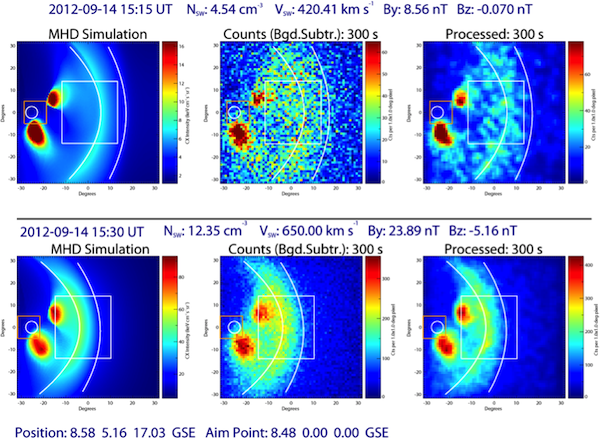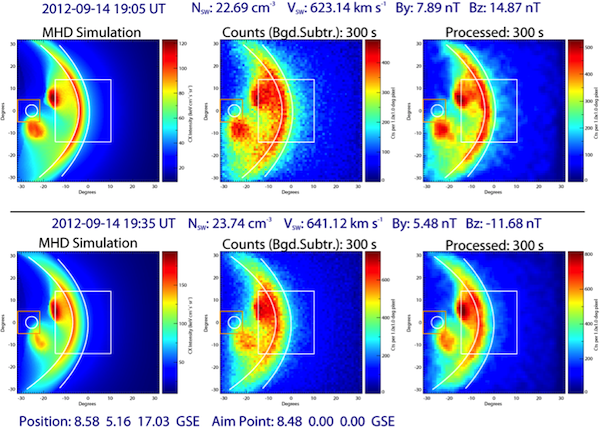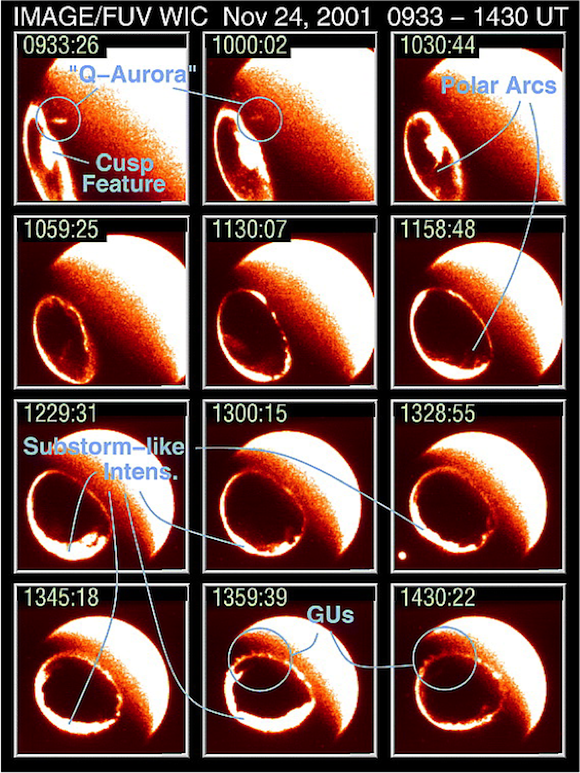SMILE
SMILE
Information


SIMULATIONS
SXI
The SXI will observe the location, shape and motion of the magnetospheric boundaries, including the bow shock, magnetopause, and cusps.
In the follow images, we present some simulations of X-ray emission under various solar wind conditions. The X-rays result from the solar wind charge exchange emission mechanism. The emission has been calculated using input from magnetohydrodynamic simulations of the solar wind parameters in the vicinity of the Earth. The video below shows one example of simulated X-ray emission, following the arrival of an interplanetary shock at the Earth. For this we have used the actual solar wind parameters measured during the recent solar storm observed on 17 March 2015, which also delivered spectacular aurora displays on the Earth's surface.
The image that will be obtained by SXI is estimated, from a suitable vantage point, by folding the X-ray simulated emission through the SXI response. The results below show images that have been constructed using integration times of 300 seconds. Image deconvolution methods are used after the instrumental images are obtained, to better determine the location of the magnetospheric boundaries.

Above are two sets of simulated X-ray emission and SXI images before (top) and after (bottom) the arrival of an interplanetary shock. Left: Simulated X-ray emission, constructed using input from a magnetohydrodynamic model of the dayside magnetosheath. Centre: Raw SXI counts image, integrated over 300 seconds. Right: SXI counts image following a step of image deconvolution to account for blurring by the point spread function of the SXI optical system. The SXI field of view for a nominal pointing position is shown by the white square. The UV Imager field of view is shown by the orange square. The approximate magnetopause and bow shock boundaries, plus the position of the Earth, are also overlaid on the images in white.

Two sets of simulated X-ray emission and SXI images before (top) and after (bottom) a southward turning of the interplanetary magnetic field (see above for details of the display).
UVI
The UVI instrument will observe part of the Earth's northern hemisphere auroral oval, much like observations taken by the IMAGE satellite, as shown below (credit: IMAGE/NASA/GSFC).
